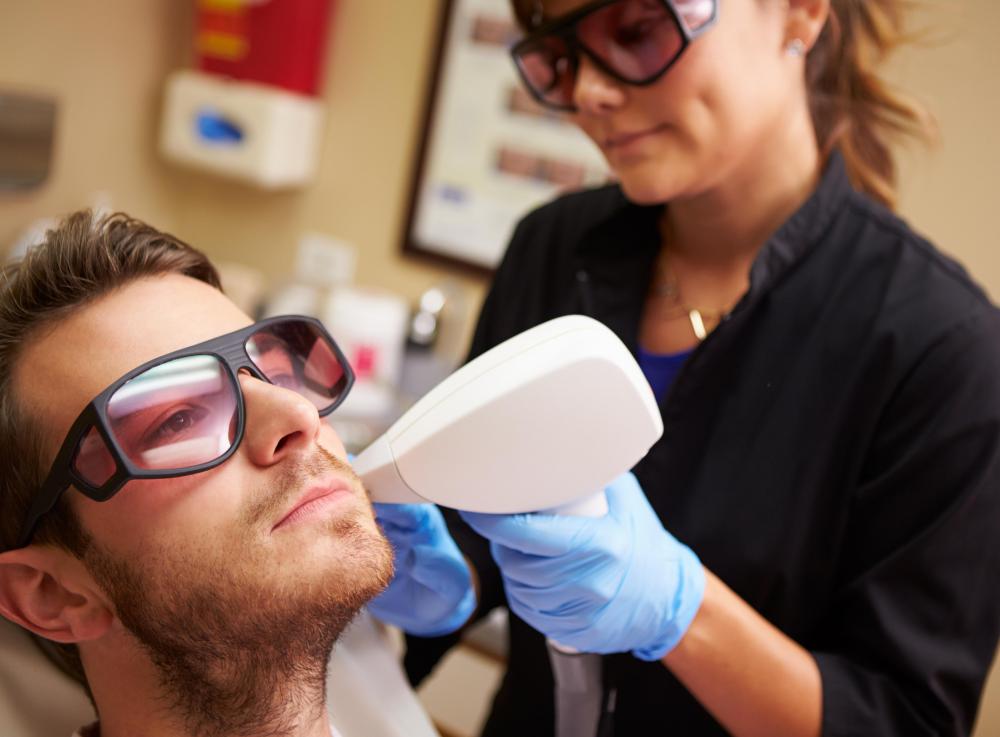At TheHealthBoard, we're committed to delivering accurate, trustworthy information. Our expert-authored content is rigorously fact-checked and sourced from credible authorities. Discover how we uphold the highest standards in providing you with reliable knowledge.
What Is Tar Acne?
Tar acne is a form of occupational acne caused by direct skin exposure to tar, oil, or creosote. It is characterized by small inflamed lesions with raised black centers. This type of acne can occur when sebum-producing glands in the skin are plugged with small amounts of tar, causing the pores to become infected. The black plugs common to tar acne are made of tar mixed with dead skin cells. If left untreated, tar acne can lead to scarring, skin discoloration, or skin cancer.
Like many other forms of acne, tar acne occurs when pores containing sebaceous glands are blocked. The primary function of sebaceous glands is to produce oil, which is carried to the surface of the skin through hair follicles. If the follicle is blocked, oil collects under the skin and promotes the growth of bacteria which feed on the oil, causing the follicle to become infected and inflamed. The blockage formed by tar-based products is much more durable than the temporarily clogged pores caused by dirt and skin cell accretion which cause common acne. This leads to longer-lasting and recurring infections, which can persist for some time after the initial exposure.

Outbreaks of tar acne are most common around the eyes, where the natural creases and folds of skin promote the build-up of tarry substances. Less frequently, outbreaks can occur on any area of skin subjected to repeated exposure to tar products. Workers most at risk are those in the construction, paving, roofing, and wood-preservation industries, due to frequent exposure to tar and creosote.

The best method of preventing tar acne is limiting direct skin exposure to tar-based substances. Workers who are exposed to tar in the course of their work should wear protective clothing and eye protection. Fabrics impregnated with tar-based substances should be cleaned or discarded, as they can bring tar into close contact with skin for long periods of time. Tar acne outbreaks should be treated by a dermatologist, as most home acne remedies are designed to kill the bacteria which cause acne lesions, and have a limited effect on the tar plugs themselves.

If left untreated, the infected follicles may eventually heal around the tar plugs, trapping the tar within the skin. Since tar is a carcinogen, this can eventually lead to skin cancer. If tar acne is exposed to the sun, it can result in the overproduction of melanin around the affected area, leading to a darkening of the skin surrounding the lesions. The long-lasting and recurring nature of untreated lesions often causes heavy scarring.
AS FEATURED ON:
AS FEATURED ON:

















Discussion Comments
My brother does road maintenance on highways and recently he developed a weird type of acne. I have just realized that it's probably tar acne. I'm going to make him see a doctor right away.
@ysmina-- Using gloves, goggles and full face masks is the best way to avoid tar acne.
My dad was a coal worker for thirty years. During those days, workers were not as careful as they are now. They had protective gear, but the rules were not so strict and workers didn't abide by them too well.
My dad had tar acne for almost all of those thirty years until he retired. I think he's one lucky guy because he didn't develop skin cancer and his skin is absolutely fine now.
For someone who has to work around tar, it sounds like this is a difficult infection to defeat.
Of course, people wear protective clothing, but I don't think they can fully cover their face right? The tar will still find a way to get on skin.
I wonder if tar acne could be prevented by frequent showering? I understand it takes a while for tar to be removed from skin, but if a worker showers after every shift, can he avoid tar acne?
Post your comments